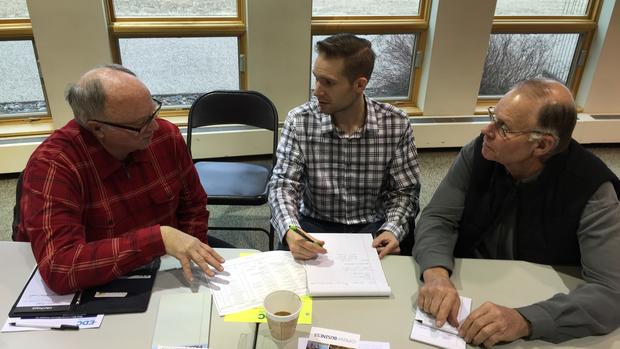WILLMAR—A newly completed report with data that show the strengths and weaknesses in retail trade in the city of Willmar and Kandiyohi County is being used to develop a vision and strategy for continued economic growth in the community.
During a day-long planning session Thursday at the Prairie Woods Environmental Learning Center in rural Spicer, members of the Kandiyohi County and City of Willmar Economic Development Commission got a look at the graphs and summaries in the 43-page report that compares Willmar and Kandiyohi County to its competitive retail market neighbors.
Chairman of the EDC’s Joint Power Board Harlan Madsen said having data on the economic health of the community — as well as challenging gaps in its economic picture—will help the group create a plan of action for what needs to be emphasized in the future.
Madsen said the EDC does not have the luxury of addressing 30 different issues but must “hone in on what’s important and what’s doable” in order to establish priorities to achieve the greatest outcome for economic development, growth and business expansion.
The report is part of the process for developing that plan for the future, said Aaron Backman, executive director or the EDC.
“Our hope is that we can put together the goals for the EDC for the next one to three years and have action items as to how we will accomplish those,” Backman said.
Based on sales tax information from the Minnesota Department of Revenue and compiled by the University of Minnesota Extension Center for Community Vitality, the detailed report includes the latest available data that track the community’s retail growth through 2014.
In its summary statement, the report indicates that Willmar’s taxable retail and service sales increased 7.4 percent between 2007 and 2014 for an estimated total of $318 million.
The shining retail star is the building materials sector where Willmar is “kicking butt,” Backman said.
According to the report, these stores racked up $74 million in taxable sales in 2014, which was nearly a quarter of all the taxable sales in the available retail report categories and more than $11 million greater than 2011.
Health and personal stores had a 28 percent increase in taxable sales, and accommodations—hotels—had a 19 percent increase in sales between 2001 and 2014.
Backman said the report provides proof to the long-held belief that Willmar is a regional retail hub, based on the “pull factor” that measures whether or not businesses are pulling in customers from outside the region.
Anything higher than 1.0 indicates that a community is bringing in outside customers and, according to the report, Willmar had a pull factor of 1.84 in 2014.
Backman said Willmar “stacked up pretty decently” compared to neighboring communities when it comes to pulling in customers. “We pull in a lot of people from outside the community of Willmar to shop in our community.”
There were some gaps in the retail market, however, including clothing sales and entertainment and amusement venues, which Backman said could present opportunities for new business growth.
Madsen said one thing he learned from the planning session and the data is that “we undersell ourselves” and that a “holistic approach” to collaborative partnership may be needed for the community to change attitudes about itself.
Madsen said the EDC needs to use facts and data to focus on solutions rather than “just hunkering down or pointing fingers or complaining” and not taking action.
By simply doing nothing, that’s a decision that moves the community backward, he said. “We’ve got to move forwards.”
Linda Mathiasen, a consultant from LD Marketing who facilitated the meeting, will be tasked with compiling the information and ideas generated from the board members and will present a report later this year that will be used to capture the goals and vision of the community and the future plan of action for the EDC.
West Central Tribune by Carolyn Lange

